#modern traditional witchcraft
Explore tagged Tumblr posts
Text
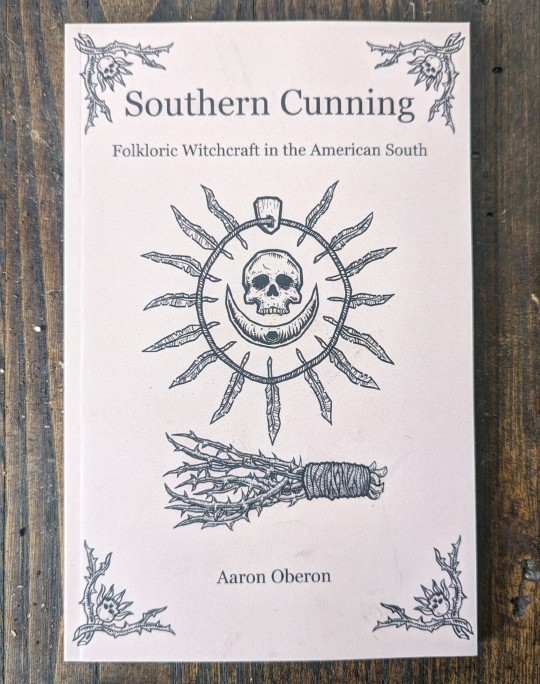
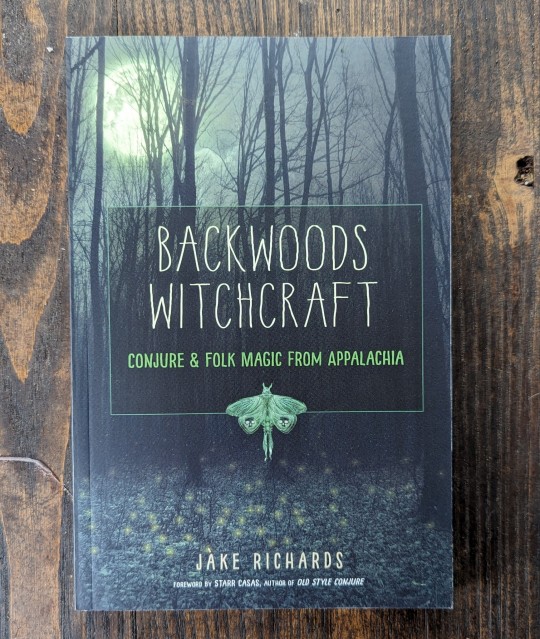
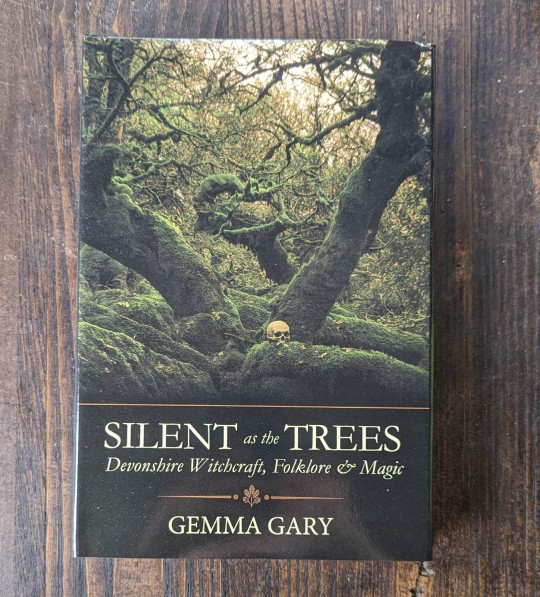
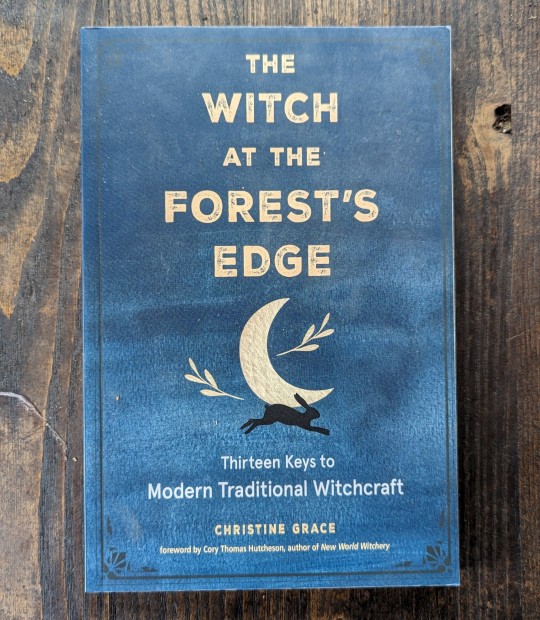
RESTOCKS!
Southern Cunning: Folkloric Witchcraft in the American South by Aaron Oberon
Backwoods Witchcraft: Conjure & Folklore from Appalachia by Jake Richards
Silent as the Trees: Devonshire Witchcraft, Folklore & Magic by Gemma Gary
The Witch at the Forest's Edge: Thirteen Keys to Modern Traditional Witchcraft by Christine Grace
#traditional witchcraft#modern traditional witchcraft#folkloric witchcraft#folk magic#folk witchcraft#witchblr#southern cunning#cunningfolk#silent as the trees#backwoods witchcraft#witch community#witchcraft#witchcraft books#pagan books#genna gary#jake richardson#aaron oberon
46 notes
·
View notes
Text
Breaking Tradition: Crafting Your Own Witchy New Year Rituals 🌿✨🍲
Traditions are powerful, magical things—but they’re not set in stone. As witches, we thrive on intention, creativity, and personal connection, which means we have the freedom (and the power) to craft rituals and traditions that resonate with us on a deeper level.
For years, I struggled with the pressure to stick to family traditions I didn’t love—namely, eating black-eyed peas and collard greens every New Year’s for luck and prosperity. While I respect the meaning behind them, I can’t stand the taste and I don’t feel a connection to them. This year, my partner and I decided to break the mold and start something new: creating our own recipes that embody the same intentions but in ways that truly delight us.
Here’s what we’re doing instead:
• We’re choosing ingredients that symbolize abundance, growth, and luck, but swapping black-eyed peas and collards for things we love, like sweet potatoes, green beans, or even orzo (which feels like golden grains of prosperity).
• We’re cooking together, imbuing the process with love, laughter, and shared energy—because that’s what we want to carry into the new year.
• We’re building a tradition that reflects us and our values, blending magic, intention, and delicious food that we actually enjoy eating.
Why It’s Okay to Break Tradition:
Family traditions can be meaningful, but they’re not the only way to honor your roots or celebrate the season. Witchcraft is all about personal empowerment and aligning your actions with your intentions. By crafting your own traditions, you’re creating rituals that hold deeper meaning for you and your path.
A Witchy Recipe for New Traditions:
1. Start with Intention: What energy do you want to invite into your life this year? Abundance? Love? Joy? Build your meal around those themes.
2. Choose Ingredients That Speak to You: Find foods that symbolize your intentions but feel personal and enjoyable. For example:
• Sweet potatoes for prosperity and grounding.
• Green beans for growth and luck.
• Orzo or rice for abundance and wealth.
3. Cook with Magic: Stir clockwise to draw in positive energy. Speak your intentions as you add each ingredient. Light a candle while you cook to amplify your magic.
4. Celebrate Together: Share your meal with loved ones and infuse your space with gratitude and love.
Remember:
Tradition is what you make of it. Whether you love black-eyed peas and collards or you’d rather feast on something else, the magic lies in your intention and the joy you pour into the moment. Make it your own.
This year, I’m embracing the freedom to create something new—something that feels like me. So here’s to delicious meals, abundant magic, and traditions that you can truly call your own. 🍽️🌙
What are your favorite ingredients for a New Year’s meal? Or something you do that’s different than the norm?
#witchblr#baby witch#green witch#kitchen witch#witchcraft#witch#self care#kitchen witchcraft#kitchen magic#recipes#green witchcraft#modern witch#witchy traditions#witch tips#new years#new years magic#spell work#breaking tradition#new years eve#new years traditions#traditions#witchy kitchen#just witchy things
145 notes
·
View notes
Text

February is a month of transition, deep magic, and powerful energy shifts. Whether you're embracing the fire of Imbolc, basking in the glow of the Full Snow Moon, or setting radical intentions under the Aquarius New Moon, there’s plenty of energy to work with. Here are the key witchy dates to note:
🔥 Imbolc – February 2 This sabbat marks the midpoint between winter and spring, a time to honor the returning light. Imbolc is deeply tied to the goddess Brigid, keeper of the hearth, creativity, and transformation. Many witches celebrate by lighting candles, performing purification rituals, or setting intentions for the months ahead. If you’ve been feeling stagnant, now is the perfect time to clear old energy and welcome fresh inspiration.
🌕 Full Snow Moon in Leo – February 12 The Snow Moon shines bright in fiery Leo, bringing a surge of confidence, passion, and creativity. This is a time to step into your power, embrace bold self-expression, and honor your heart’s desires. Fire magic, glamour spells, and rituals for self-love and courage are especially potent under this lunation.
⚖️ World Social Justice Day – February 20 Magic isn’t just personal—it’s collective. Many witches see activism as part of their practice, using their energy and craft to stand up for justice. Whether it’s lighting a candle for protection, speaking out against injustice, or supporting marginalized communities, this is a day to reflect on how you can weave magic and action together.
🌑 New Moon in Aquarius – February 27 Aquarius energy is rebellious, innovative, and forward-thinking, making this New Moon an excellent time for setting unconventional goals and embracing change. Work with this energy by manifesting new ideas, breaking free from outdated patterns, or calling in community connections. This is also a great time for divination, as Aquarius often brings flashes of insight and intuition.
How will you be working with these energies this month? Let’s talk about it in the comments! 🔮✨
Sign up for my newsletter at www.morriganscrows.com and get a 15% off coupon + a Free Beginner Witch’s Guide to Crystals (14-page e-booklet).
#quefefe#witchblr#witch community#witchythings#morrigans crows#witchcraft#witch aesthetic#beginner witch#witch#witchy#imbolc#leo full moon#snow moon#aquarius new moon#social justice witch#wheel of the year#lunar magic#pagan traditions#moon rituals#modern witchcraft#astrology witch
23 notes
·
View notes
Text
Planetary Rulings and Core Associations
Aries is ruled by [♂] Mars, the planet of sex and aggression
Taurus is ruled by [♀] Venus, the planet of love
Gemini is ruled by [☿] Mercury, the planet of communication
Cancer is ruled by the [☽] Moon, the planet of emotions
Leo is ruled by the [☉] Sun, the planet of identity and ago
Virgo is ruled by [☿] Mercury, the planet of communication
Libra is ruled by [♀] Venus, the planet of love
Scorpio is ruled by [♇] Pluto, the planet of power and rebirth
Sagittarius is ruled by [♃] Jupiter, the planet of growth and luck
Capricorn is ruled by [♄] Saturn, the planet of responsibility
Aquarius is ruled by [⛢] Uranus, the planet of freedom and invention
Pisces is ruled by [♆] Neptune, the planet of inspiration and compassion
—————————————
Extra information for fellow baby witches
Note that there are discrepancies with the planetary rulings. Some signs are associated with two planets due to modern and traditional practice differences, so you may feel a disconnect with these. I've opted to write up the modern approach.
These are the traditional alternatives, in addition to what's above:
Scorpio is also ruled by [♂] Mars, the planet of sex and aggression
Aquarius is also ruled by [♄] Saturn, the planet of responsibility
Pisces is also ruled by [♃] Jupiter, the planet of growth and luck
#astrology#zodiac#planetary associations#baby witch#beginner witch#planetary rulings#witchblr#cosmic witch#cosmic witchcraft#modern witchcraft#traditional witchcraft#original content
93 notes
·
View notes
Text
Now that I'm growing more in my craft, I've found in my personal practice that things that are "betwixt" feel so sacred to me.
The sunrise and sunset are the in between between day and night. Both a hello and a goodbye, and yet so much more.
The fork in a path holds so many promises of adventure and the unknown.
The comfortable pause in a conversation is charged with the potential for the next spoken words.
It made me realize that life is beautiful, and a gift, and in those moments I feel like I'm one with the earth.
#witchcraft#witch#witchblr#magic#witch thoughts#witchy#traditional witchcraft#modern witchcraft#folk witchcraft#pagan witch
14 notes
·
View notes
Text
Carols, Chaos and pagan roots.
Even Christmas Carols Have Pagan Roots
Think Christmas carols are all about nativity scenes, snowy landscapes, and goodwill to all? Well, here’s a twist for you: those festive tunes you hum every December have their roots firmly planted in pagan traditions. Yes, even your beloved “Deck the Halls” has a history that’s more wild midwinter festival than church choir.
Long before carols were about angels and silent nights, they were part of ancient celebrations to mark the Winter Solstice. People sang to trees, danced to welcome the sun, and made a racket to banish the dark and invite brighter days ahead. Over time, the church stepped in, tidied them up, and gave them a Christian makeover—but the spirit of those older, wilder rituals still lingers.
So, as you sing along this season, remember—you’re keeping alive a tradition of light, laughter, and maybe just a bit of mischief that’s been going strong for centuries. Let’s unravel the pagan magic hiding in the heart of your favourite Christmas songs.
The Pagan Roots of Christmas Carols
When you think about Christmas carols, it’s easy to imagine warm, cozy evenings with family, perhaps a mug of mulled wine in hand, and cheerful songs filling the air. But did you know that many of these familiar tunes and traditions trace their roots back to ancient pagan midwinter festivals? Long before Christmas became the celebration we know today, people were singing and dancing their way through the darkest nights of the year, honouring the cycles of nature and the turning of the seasons.
The word “carol” itself comes from the Old French “caroler,” which means “to dance in a circle.” Originally, carols weren’t tied to any particular religion but were part of midwinter celebrations that brought communities together to feast, make merry, and sing songs of hope and light. These early carols were less about the birth of Christ and more about marking the Winter Solstice, celebrating survival, and calling back the sun. Over time, Christianity absorbed and adapted these traditions, giving us the carols we know today.
Let’s explore a few well-known carols that carry echoes of their pagan past.
Deck the Halls – A Nod to Ancient Evergreens
“Deck the Halls” is one of the most recognisably festive carols, but its origins are unmistakably pagan. The melody comes from the 16th-century Welsh song “Nos Galan,” which wasn’t about Christmas at all but celebrated the New Year. It was a time for feasting, drinking, and preparing for brighter days ahead.
The lyrics, “Deck the halls with boughs of holly,” point directly to pagan Solstice traditions, where evergreens like holly, ivy, and pine were brought indoors as symbols of life and resilience during the harsh winter months. These plants were believed to house protective spirits, and decorating with them invited good fortune while warding off negative energies.
Even the candlelight mentioned in carols like this ties back to the ancient practice of celebrating the return of the sun after the Solstice. The whole song, in its original form, was less about Christmas and more about honouring the turning of the year and finding joy in the heart of winter.
The Holly and the Ivy – Balancing Nature
“The Holly and the Ivy” feels almost mystical with its repetitive, chant-like melody, and there’s good reason for that. In pagan traditions, holly and ivy represented the natural balance of life—holly symbolised masculinity and the Holly King, who ruled the waning half of the year, while ivy represented femininity and the nurturing forces of nature.
This balance of male and female energies, light and dark, was central to pagan beliefs, especially during midwinter, when communities looked forward to the rebirth of the sun. Christianity later reworked these ideas into the carol we know, linking holly’s sharp leaves to Christ’s crown of thorns and its red berries to his blood.
Still, the original reverence for these plants as symbols of survival and hope remains at the heart of the song, reminding us of the sacred connection to the natural world that midwinter has always celebrated.
Good King Wenceslas – Charity with Pagan Undertones
“Good King Wenceslas” might seem like a straightforward Christian carol, celebrating kindness and charity, but it carries echoes of older traditions too. The story, written in the 19th century, tells of Wenceslas, a 10th-century Bohemian king, braving the snow to deliver food and firewood to a poor peasant on St. Stephen’s Day (December 26th).
While the tale promotes Christian values, it reflects pagan midwinter practices of sharing resources to ensure communal survival during the harshest months. In pre-Christian Europe, leaders were often seen as protectors of their people and the land, responsible for everyone’s well-being, just as Wenceslas is portrayed.
The vivid imagery of his footprints warming the snow for his servant to follow also hints at older myths of leaders or deities guiding their people through dark times, much like the return of the sun after Solstice.
Even the timing—St. Stephen’s Day—has pagan roots, as midwinter festivals often included feasts and rituals focused on giving thanks and invoking blessings for the year ahead.
Here We Come A-Wassailing – Singing for the Land
“Here We Come A-Wassailing” ties directly to ancient midwinter traditions. The word “wassail” comes from the Old English “waes hael,” meaning “be well” or “be in good health.” Groups of wassailers would go door-to-door singing and offering good wishes in exchange for food and drink—essentially the original version of carolling.
But wassailing wasn’t just about people. In many regions, it involved singing to apple trees in orchards, pouring cider around their roots, and making noise to ward off evil spirits. These rituals were meant to ensure a good harvest in the coming year, blending human celebration with a reverence for nature’s cycles.
Over time, this tradition evolved into the communal carol-singing we know today, but the echoes of these older, earth-focused practices remain in the spirit of the songs.
O Tannenbaum – Reverence for the Sacred Tree
While more commonly associated with Germany, “O Tannenbaum” reflects a practice that predates Christianity. In pagan traditions, trees were seen as sacred, often believed to house spirits or even gods. Bringing an evergreen tree into the home during midwinter symbolised life, hope, and renewal, as these trees stayed green even in the harshest weather.
Singing to or about trees was part of many midwinter rituals, and as Christianity spread, these customs were adapted into nativity celebrations. “O Tannenbaum” still carries that ancient reverence for the natural world, reminding us of humanity’s enduring connection to nature.
A Blend of Old and New
Even though Christmas carols are now tied to nativity scenes and Christian ideals, their roots tell a richer story. These songs evolved from ancient midwinter celebrations that honoured nature, survival, and the turning of the seasons. Carols like “Deck the Halls,” “The Holly and the Ivy,” “Good King Wenceslas,” and “Here We Come A-Wassailing” remind us that while the lyrics may have changed, the heart of these songs remains the same: a celebration of life, community, and hope in the darkest nights of the year.
So, next time you sing a carol, remember that you’re not just spreading festive cheer—you’re keeping alive ancient traditions that have been sung for centuries, marking the enduring connection between humanity and the cycles of the natural world.
So, there you have it—your beloved Christmas carols aren’t just cheerful tunes for the season; they’re echoes of ancient traditions that celebrated survival, community, and the triumph of light over darkness. Whether you’re singing to a tree, decking the halls with holly, or wassailing your way through the neighbourhood, you’re tapping into rituals that have been reimagined but never truly lost. Next time you hum along to a carol, take a moment to appreciate the wild, untamed history behind the melody—it’s a legacy of joy, resilience, and a little bit of pagan magic wrapped up in a festive bow.
Follow the Lantern’s
Glow
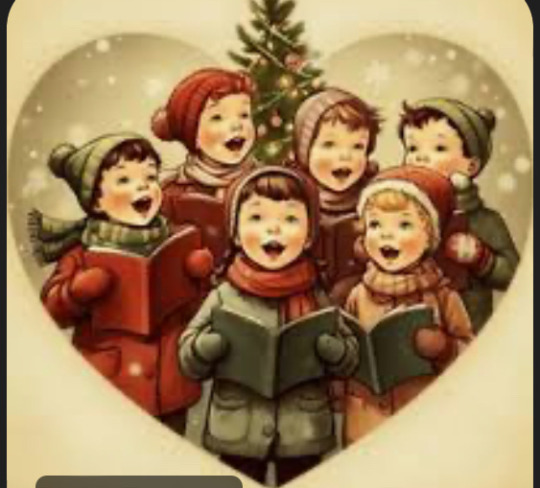
#paganism#christmas#yuletide#witchcraft#xmas carols#witchblr#traditional christmas#the holly and the ivy#modern paganism
4 notes
·
View notes
Text
I'm 100% projecting my own paganism onto my beloved characters but I just think there should've been more pagan magic practice in OUAT.
you're telling me that killian, a man that spent all his life out on the sea, DOESN'T worship the Moon Goddess ? when she has been a protector of sailors for THOUSANDS of years (and is partly why we call ships "she" in her honour)
you're telling me Emma wouldn't have spell jars all over the house, wouldn't sprinkle salt on the doorstep, or leave offerings for the deities ??
we already know Greek mythos is real. why wouldn't other deities be too ? Norse, Slavic, Celtic, Egyptian, Persian, Chinese, Japanese, etc.
I wish magic and spells took more after paganism and witchcraft. sygils carved into wood or written on paper for protection. enchanted jars and crystals that fit in pockets. stirring their hot cocoa clockwise so it makes the headache go away quicker. whispering enchantations into their food before eating.
I have too many thoughts on this
#my own paganism is showing but i LOVE the idea of emma leaning more into witchcraft n traditional magic#reading into the history of magic n paganism and all that#and there is NO reason that the people in the EF should be christian or any modern religion we have#3am thoughts#ouat#killian jones#emma swan
14 notes
·
View notes
Text
Hey Witches! It's Time!!
Hey witches, this upcoming May 25-26, we will be hosting the virtual event Our Sorcery Hour for the second year, featuring a curated and diverse list of workshops from 10 different presenters who will teach you about their Craft.
This event is organized and collectively hosted by BIPOC and LGBTQIA members of the Craft. It is one of the few metaphysical events in which presenters are paid for their time, and a cut from each ticket goes directly to the Charity DIRECT RELIEF. DIRECT RELIEF is one of the few charities worldwide that uses 100% of the money it raises for the cause and not for bureaucratic paperwork.
The small cost of this event makes it easily accessible to practically everybody interested. It also supports our collective cause of creating a safe space for seekers of Magic while the teachers are rightfully compensated for their valuable time.

This Year 2024 we are featuring as presenters the incredible: - Daphne la Hechicera Author of Mexican Sorcery. - Mawiyah Kai EL-Jamah Bomani author of 'Conjuring the Calabash'. - Emma Kathryn author of 'Season Songs' and 'Witch Life'. - Thumper Forge co-author of 'Virgo Witch' for Llewellyn Worldwide - Jezmina Von Thiele, co-host of the Romanistan podcast. - Laura González host of Tarot by Laura González and Lunatic Mondays for Circle Sanctuary - Ylva Mara Radziszewski aka Bimboyaga, author of 'A Practical Guide for Witches'. - Aly Kravetz aka BronxWitch Creator of BronxWitch HeadQuarters - And some more to confirm with you soon witches & brujas.
Sponsorship If you own a Witchy Business and you are looking for sponsorship, just contact us. Last year, our event attracted over 200 participants, and the virtual program had 964 downloads in just two weeks.
Grab your tickets here: https://elhoimleafar.com/oursorceryhour/
#our sorcery hour#sorcery#sorcerer#witch#witches#witches supporting witches#tarot#magick#witchcraft#modern witch#modern witches#modern witchcraft#traditional witch#traditional witches#traditional witchcraft#witchblr#witches of tumblr#bipoc witches#black witches#trans witches#romanian witches#poc witch
2 notes
·
View notes
Text

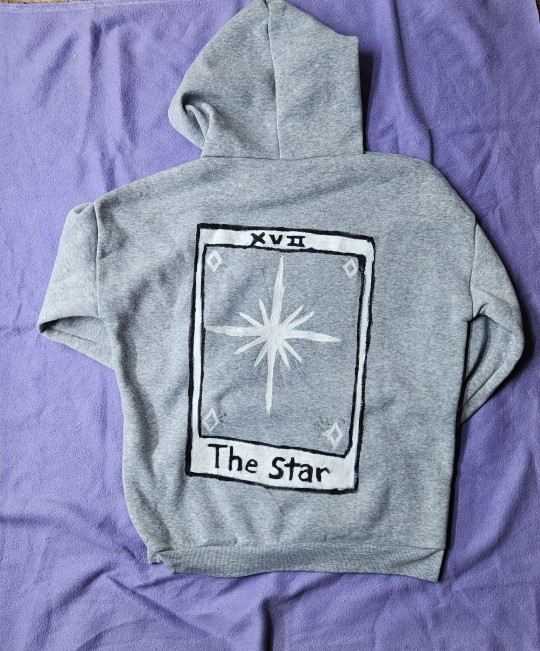
"The Star" handpainted hoodie
Available on my etsy!
#the star#tarot#the star tarot#tarot cards#witchy#witchcraft#witches#witch#occult#witch fashion#modern witch#hand painted#hand painted clothing#hand painted hoodie#my art#my artwork#art#traditional art#paint#painting
3 notes
·
View notes
Text

WHAT KIND OF NPC ARE YOU?
morally grey magic user who is kind of a hermit. ah, an intellectual and morally grey. how sexy of you. but in more seriousness, the party of adventurers who run into you and could sorely use your help or guidance have one hell of a time trying to figure you out. you do not find yourself aligning with traditional groups or institutions, but rather wherein your interests lie. you live for doing what you want to do and are just straight vibing, and that confuses a lot of people, but you stay unbothered. that’s a magnificent quality about you. that part of you that has learned not to give a shit what other people think because you know that’s a waste of time. you know what you care about and how you want to live, and that is what is important to you. while your trust is not lightly earned, anyone who does manage to get on your good side has got themselves a very powerful and very loyal friend. rock on, you funky little wizard.

TAGGED BY: @khenzi ( thank u! ) TAGGING: @el3nas, @pehtrohvah, @strnza, @siphoncursed, @klaeus & @hybr2d
#out of character. ⸻ dash games.#this is TRULY ..... giving me life#ansel IS a lil hermit still livin in the woods like heating n hot water from taps doesn't now exist in the modern world#only following the laws and the rules of the pack#his own funky lil commandments#like ya he is traditional old ways but he's so old that they're mostly HIS traditional old ways. he INVENTED a lot of them#and he is in fact a very powerful and very loyal pal#and the magic? well we all know he has a thing for witches... i mean witchcraft (no i don't)#my lil wolf weirdo <333
4 notes
·
View notes
Photo
@ariel-seagull-wings @thealmightyemprex @the-blue-fairie


First off, don’t feed your baked blood to anyone without their knowledge. Don’t be a shitty person.
I have a book at home called Heksens Håndbog (The Witch’s Handbook) written by an elderly witch and I love how her spells have zero chill. It’s a collection of old spells and magic that she has collected over the years and it even has the original ointments from the middle ages that were written down. That means there’s a lot of “catch a white snake with your bare hands on midsummer’s eve” and “coat a raven’s feather in sap and burn it during a new moon”. Oh and there’s a ton of uses for menstrual blood. You get the idea. It’s quite an interesting read.
#witchcraft#witches#love spells#ancient witchcraft vs modern witchcraft#traditional witchcraft vs modern witchcraft
6K notes
·
View notes
Text
Homemaking, gardening, and self-sufficiency resources that won't radicalize you into a hate group

It seems like self-sufficiency and homemaking skills are blowing up right now. With the COVID-19 pandemic and the current economic crisis, a lot of folks, especially young people, are looking to develop skills that will help them be a little bit less dependent on our consumerist economy. And I think that's generally a good thing. I think more of us should know how to cook a meal from scratch, grow our own vegetables, and mend our own clothes. Those are good skills to have.
Unfortunately, these "self-sufficiency" skills are often used as a recruiting tactic by white supremacists, TERFs, and other hate groups. They become a way to reconnect to or relive the "good old days," a romanticized (false) past before modern society and civil rights. And for a lot of people, these skills are inseparably connected to their politics and may even be used as a tool to indoctrinate new people.
In the spirit of building safe communities, here's a complete list of the safe resources I've found for learning homemaking, gardening, and related skills. Safe for me means queer- and trans-friendly, inclusive of different races and cultures, does not contain Christian preaching, and does not contain white supremacist or TERF dog whistles.
Homemaking/Housekeeping/Caring for your home:
Making It by Kelly Coyne and Erik Knutzen [book] (The big crunchy household DIY book; includes every level of self-sufficiency from making your own toothpaste and laundry soap to setting up raised beds to butchering a chicken. Authors are explicitly left-leaning.)
Safe and Sound: A Renter-Friendly Guide to Home Repair by Mercury Stardust [book] (A guide to simple home repair tasks, written with rentals in mind; very compassionate and accessible language.)
How To Keep House While Drowning by KC Davis [book] (The book about cleaning and housework for people who get overwhelmed by cleaning and housework, based on the premise that messiness is not a moral failing; disability and neurodivergence friendly; genuinely changed how I approach cleaning tasks.)
Gardening
Rebel Gardening by Alessandro Vitale [book] (Really great introduction to urban gardening; explicitly discusses renter-friendly garden designs in small spaces; lots of DIY solutions using recycled materials; note that the author lives in England, so check if plants are invasive in your area before putting them in the ground.)
Country/Rural Living:
Woodsqueer by Gretchen Legler [book] (Memoir of a lesbian who lives and works on a rural farm in Maine with her wife; does a good job of showing what it's like to be queer in a rural space; CW for mentions of domestic violence, infidelity/cheating, and internalized homophobia)
"Debunking the Off-Grid Fantasy" by Maggie Mae Fish [video essay] (Deconstructs the off-grid lifestyle and the myth of self-reliance)
Sewing/Mending:
Annika Victoria [YouTube channel] (No longer active, but their videos are still a great resource for anyone learning to sew; check out the beginner project playlist to start. This is where I learned a lot of what I know about sewing.)
Make, Sew, and Mend by Bernadette Banner [book] (A very thorough written introduction to hand-sewing, written by a clothing historian; lots of fun garment history facts; explicitly inclusive of BIPOC, queer, and trans sewists.)
Sustainability/Land Stewardship
Braiding Sweetgrass by Robin Wall Kimmerer [book] (Most of you have probably already read this one or had it recommended to you, but it really is that good; excellent example of how traditional animist beliefs -- in this case, indigenous American beliefs -- can exist in healthy symbiosis with science; more philosophy than how-to, but a great foundational resource.)
Wild Witchcraft by Rebecca Beyer [book] (This one is for my fellow witches; one of my favorite witchcraft books, and an excellent example of a place-based practice deeply rooted in the land.)
Avoiding the "Crunchy to Alt Right Pipeline"
Note: the "crunchy to alt-right pipeline" is a term used to describe how white supremacists and other far right groups use "crunchy" spaces (i.e., spaces dedicated to farming, homemaking, alternative medicine, simple living/slow living, etc.) to recruit and indoctrinate people into their movements. Knowing how this recruitment works can help you recognize it when you do encounter it and avoid being influenced by it.
"The Crunchy-to-Alt-Right Pipeline" by Kathleen Belew [magazine article] (Good, short introduction to this issue and its history.)
Sisters in Hate by Seyward Darby (I feel like I need to give a content warning: this book contains explicit descriptions of racism, white supremacy, and Neo Nazis, and it's a very difficult read, but it really is a great, in-depth breakdown of the role women play in the alt-right; also explicitly addresses the crunchy to alt-right pipeline.)
These are just the resources I've personally found helpful, so if anyone else has any they want to add, please, please do!
#homemaking#homemaking resources#gardening#urban gardening#self sufficiency#self sufficient living#sustainability#sustainable living#homesteading#nontrad homemaker#nontrad housewife#urban homesteading#solarpunk#cottagecore#kitchen witch#kitchen witchcraft#crunchy to alt right pipeline#book rec#book recommendations#resource#long post#mine#racism tw#racism mention#transphobia tw#transphobia mention
32K notes
·
View notes
Text
Before I’m accused of having an AI avatar, my bestie made this low-poly ps2 lookin ass icon 4 me. AI could never….
1 note
·
View note
Text
Starting Over
Hello there witchblr.
I'm not exactly new, but this is a new blog for me.
I've been officially practicing witchcraft for about 7 years now. Been doing cartomancy off and on for way longer (since I was about 11). I was a part of a free online witch academy where I learned some great basics but as the year passed it got more difficult for the witches to keep up with all the educational work. I switched to reading and watching some educational videos to help me further along. I have a pretty good handle on my craft... Just missing the community aspect though for the most part I am a secular witch. My focus is on European and Southern (U.S.) folk magick. Hoping to meet some like minded folks on here. If anything, just reblog and create resources for other witches.
(Maybe some random other things too.)

1 note
·
View note
Text
"Modern folk witches don't strictly adhere to the eight-spoked 'wheel of the year' used by other neopagans. We prefer to watch our local landscapes and identify days that correspond to the shifting of the seasons where we live. The wheel of the year is a modern invention, and no pagan societies can be said to have observed all of these dates. It's best to look to the lore for specific rituals for seasonal celebrations. Witches who live in Australia or Iceland may prefer different dates for their seasonal rites. What's important is that the days be governed by the tides of nature, not the shackles of convention."
- Roger J Horne's Folk Witchcraft: A Guide to Lore, Land, & the Familiar Spirit for the Solitary Practitioner
I appreciate this perspective as here in Australia, our seasons are just not the same. I'm up in Queensland, and I would say that our seasons are nowhere near as distinct as the classic spring, summer, autumn, and winter that you get in the Northern Hemisphere. I'm currently working on making a seasonal calendar by conferring with Gubbi Gubbi elders about traditional song lines that dictate the changing seasons. Here is a seasonal calendar that the The Wakka Wakka, Jarowair and Barrumgum tribes follow who are the traditional owners of the Bunya Mountains.

Many witches follow an inverted wheel of the year to 'match our seasons' but neither the traditions nor the actual seasons match and it just feels wrong... like sure the solstices (longest and shortest days of the year) can be celebrated but... our celebrations should match up with our regional seasons.
#witchcraft#australian witch#folk witch#folk witchcraft#traditional witchcraft#trad witch#witch#stormbornwitch#marci talks about stuff#indigenous#sabbats
680 notes
·
View notes
Note
I'm starting to question how much the "old" pagan costumes and festivities were indeed about fertility, sex, etc.
Ronald Hutton claims that there is no evidence in history that the maypole was saw as a phallic symbol, for example. And there are other possible meanings. But you usually just read in books as a matter of fact that it was a phalic representation and the dance around was about fertility etc
I recently read the witche's bible because I was curious about traditional wicca rituals and there is suuch a high focus on how every single costume or holiday was about fertility and sex that honestly it makes me wonder, how much it was indeed about those things and how much is just the interpretation of modern people like Gardner making it about those things
You're hitting the nail on the head without even realizing it, Anon.
SO much of what we think we know about "old pagan customs" comes from books written by Victorian-era occultists. And if there is one thing to be said about Victorian-era occultists, it was that they were horny as FUCK. (And the Edwardians weren't any better.)
These people went around rubber-stamping FERTILITY in big red letters on anything to do with goddesses or springtime or even the most passing reference to pregnancy, childbirth, midwifery, or babies. Literally any excuse for ritual nudity or a sacred orgy. And no, that is not satire. Or a euphemism.
The other thing that can be said about Victorian-era occultists is that quite a lot of them were history buffs and very prolific writers. (If you look at the roster of the Hermetic Order of the Golden Dawn and their regular guests, it reads like a Who's Who of the writers of fantastical fiction and poetry at the time.) So the result of that is a whole lot of literature about folklore and "ancient pagan customs" written by people who were filtering what little historical information they had at the time through the lens of their own opinions and those of their colleagues.
(It's worth noting that that "lens" often consisted quite heavily of free-associated ideas not supported by history or things they completely pulled out of their own asses. Leland's "Aradia" is a good example of the "Ancient Sacred Text Given To Me By A Real Witch Who Totally Exists And I Definitely Didn't Write This Myself And Make Up This Claim For Clout" genre.)
Quite unsurprisingly, a lot of these beliefs got absorbed into the roots of the modern witchcraft movement a few decades later, since those were the popular resources available at the time and the same generally-prevailing opinions and biases were still present. So this started WELL before Gardner and his coven were on the scene. They just picked up the thread.
And as we all know, once there's a generation or so of removal from the founding beliefs of a movement, people tend to take the older texts as gospel, regardless of how flawed they might be.
See Also: We Still Have To Talk About The Witch-Cult Hypothesis Because Margaret Murray Wrote The Encyclopedia Britannica Entry On Witchcraft And It Wasn't Updated Until The 1960s.
See Also: We Still Have To Explain The Difference Between Historical Fiction And The Historical Record Because Of The White Goddess And The Mists Of Avalon.
See Also: We Still Have To Talk About The Burning Times Myth Because Raymond Buckland Made That Stupid Fucking Documentary.
See Also: Why The Hell Is Anyone Still Recommending Silver Ravenwolf.
Anyway, the short answer is that yes, your impression is correct, and I'm glad you're reading Hutton and forming that practical context for the witchcraft/pagan literature and media that you encounter.
Keep honing that bullshit detector and best of luck!
#A. Nonymousse#witchcraft#witchblr#history of witchcraft#pagan#pagan problems#Bree answers your inquiries
352 notes
·
View notes